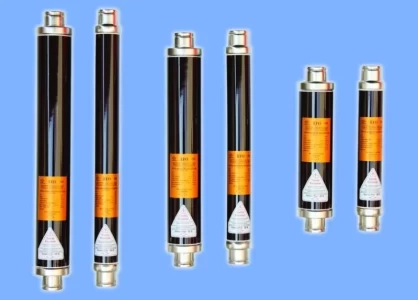Energy Efficiency and Sustainability in Fuse Design
The global emphasis on energy efficiency and sustainability is significantly influencing the design and selection of low voltage fuses. As integral components of electrical systems, low voltage fuses are evolving to meet the demands for not only safety and reliability but also for environmental stewardship and energy conservation. This article explores how these trends are shaping the future of low voltage fuse technology.
The Importance of Energy Efficiency in LV Fuses
While LV fuses play a crucial role in protecting circuits from overcurrents and short circuits, they can also contribute to energy losses within electrical systems. These losses primarily occur due to two factors:
I²R Losses: The passage of current through the fuse element itself generates heat due to its inherent resistance. Minimizing this resistance is crucial for reducing energy losses.
Arc Quenching Mechanisms: Traditional arc quenching techniques within fuses can involve energy-dissipating materials that contribute to overall power loss.
Design Strategies for Improved Efficiency
Manufacturers are implementing innovative design strategies to reduce energy losses associated with LV fuses:
Low-Resistance Fuse Elements: Utilizing materials with lower resistivity for the fuse element can significantly reduce I²R losses. This may involve advanced alloys or exploring alternative conductive materials.
Optimized Fuse Body Design: Streamlining the design of the fuse body can minimize the length of the current path, further reducing I²R losses.
Advanced Arc Quenching Techniques: New arc suppression methods are being explored that utilize less energy-dissipative materials or active arc suppression mechanisms.
High-Efficiency Fuse Holders: Fuse holders with improved thermal conductivity can dissipate heat more effectively, minimizing the overall energy loss associated with the fuse assembly.
Sustainability Considerations in Fuse Manufacturing
Eco-friendly Materials
The trend towards sustainability has led manufacturers to use eco-friendly materials in fuse construction. These materials are less harmful to the environment and are often recyclable, reducing the ecological footprint of manufacturing and disposing of fuses.
Life Cycle Assessment
Sustainability in low voltage fuse design extends to considering the entire lifecycle of the product, from manufacturing and operation to disposal or recycling. Life cycle assessments help in understanding and minimizing the environmental impact of fuses throughout their lifespan.
The Role of Standards and Regulations
Compliance with Environmental Standards
There is an increasing requirement for low voltage fuses to comply with international environmental standards such as RoHS (Restriction of Hazardous Substances) and REACH (Registration, Evaluation, Authorisation, and Restriction of Chemicals). These standards ensure that fuses are free from harmful substances and are safer for both humans and the environment.
Energy Efficiency Certifications
Energy efficiency certifications, like ENERGY STAR or the EU’s Energy Label, are becoming more relevant for low voltage fuses. These certifications guide consumers and industries in selecting fuses that meet high energy efficiency and environmental standards, promoting sustainable practices.
Challenges and Opportunities
Cost vs. Sustainability
The integration of energy-efficient and sustainable practices in fuse design often comes at a higher initial cost. However, the long-term savings in energy consumption and the benefits of reduced environmental impact can outweigh these initial expenses, presenting a compelling case for their adoption.
Innovation and Market Demand
As market demand for sustainable and energy-efficient products grows, manufacturers are incentivized to innovate and improve their offerings. This trend fosters technological advancement and competition, driving the development of more efficient and environmentally friendly low voltage fuses.
The trends in energy efficiency and sustainability are significantly influencing the design and selection of low voltage fuses. By prioritizing reduced energy consumption and environmental impact, these trends are driving innovations that enhance the performance and sustainability of fuse technologies. As the world continues to focus on sustainable practices, low voltage fuses will undoubtedly evolve to meet these demands, integrating seamlessly into the eco-conscious electrical systems of the future.

